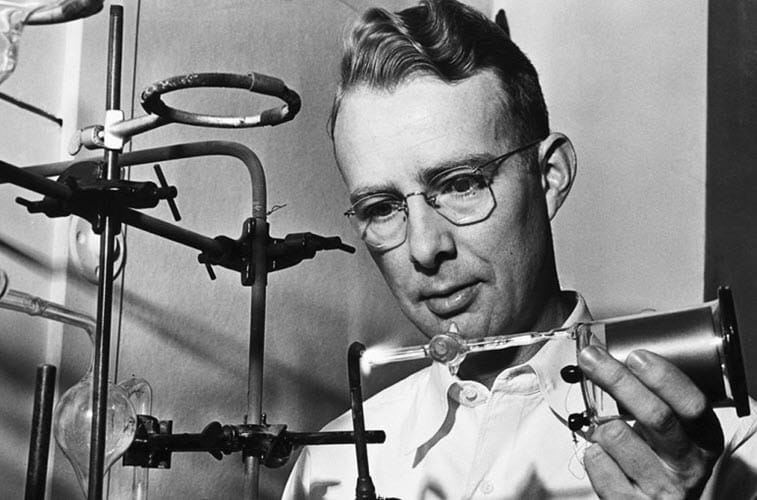Luis Walter Alvarez: Trailblazing the Frontiers of Physics and Geology

Luis Walter Alvarez (13 June 1911 – 1 September 1988) was an American experimental physicist, inventor, and professor. He was awarded the Nobel Prize in 1968.
Life and Career
He was born on 13 June 1911, in California, United States. His educational journey began at Madison School, where his passion for science was nurtured by enthusiastic teachers. He went on to attend Lowell High School, where he further honed his scientific skills. It was during this time that he developed a deep fascination with physics and its potential to unlock the mysteries of the universe.
Following his high school graduation, Alvarez enrolled at the University of Chicago, renowned for its pioneering work in physics. Under the mentorship of renowned physicist Arthur H. Compton, Alvarez thrived in his academic pursuits. He completed his undergraduate studies in just three years, earning a Bachelor of Science degree in physics in 1932.
He then obtained his Ph.D. in physics in 1936 from the University of California, Berkeley. In 1936, Alvarez joined the faculty at the University of California, Berkeley, where he began his illustrious career as a professor of physics. Over the years, his research encompassed a wide range of topics, including particle physics, nuclear physics, and quantum mechanics.
His contributions to the scientific community were prolific and groundbreaking. In 1940, he invented the “wire-chamber” particle detector, a revolutionary device that greatly enhanced the precision and efficiency of particle detection. This invention played a crucial role in advancing the field of high-energy physics.
During World War II, he joined the MIT Radiation Laboratory, where he contributed to the development of radar systems, aiding the Allied forces in their defense efforts. His remarkable work on radar led to the invention of the Ground Control Approach (GCA) system, which greatly improved aviation safety during landing.
In the years following the war, Alvarez’s focus shifted to nuclear physics. He conducted groundbreaking experiments at the Lawrence Berkeley National Laboratory, where he discovered numerous new particles and isotopes. His work on K-mesons earned him the Nobel Prize in Physics in 1968, a well-deserved recognition of his significant contributions to the field.
One of Alvarez’s most renowned contributions was the proposal of the asteroid impact theory to explain the mass extinction of dinosaurs. In collaboration with his son, geologist Walter Alvarez, Luis Alvarez put forth the hypothesis that a massive asteroid impact caused the extinction event approximately 66 million years ago. This theory gained widespread acceptance and revolutionized our understanding of Earth’s history.
He wrote several influential books, including “Alvarez: Adventures of a Physicist,” which became a source of inspiration for aspiring scientists. He died on 1 September 1988, in Berkeley, California, United States.
Award and Legacy
He was awarded the Nobel Prize in 1968 for his discovery of resonance states in particle physics using the hydrogen bubble chamber. His contributions to science and his lasting impact continue to inspire generations of researchers and scientists. His relentless pursuit of knowledge and innovative thinking has solidified his place in scientific history.
Observer Voice is the one stop site for National, International news, Sports, Editor’s Choice, Art/culture contents, Quotes and much more. We also cover historical contents. Historical contents includes World History, Indian History, and what happened today. The website also covers Entertainment across the India and World.

